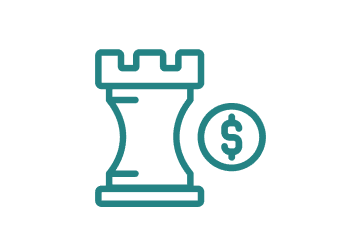As you’re looking at your plan for the coming year: does it lay out the specific internal and external drivers that could impact your targets? Does it accommodate for uncertainty? Is there enough agility to easily revisit and tweak?
If you’re answering “no” more often, it’s likely time to abandon sluggish, top-down, cycle-based planning in favor of continuous, forward-looking scenario planning. And with the rapid progression of AI, businesses can embrace driver-based scenario planning in a way they couldn’t before.
Why Is Scenario Planning So Important?
Scenario planning is a way for finance professionals to assess a variety of potential financial outcomes, including both best-case and worst-case. By modeling different versions of the future, businesses can stress test their plans and identify signposts to monitor for different trajectories. In today’s extremely fluid conditions, scenario planning allows finance leaders to respond with agility as the future unfolds.
Unfortunately, the upfront time it takes to model scenarios often results in businesses deprioritizing it for more urgent tasks. But with AI, things are changing.
Scenario Planning Is Table Stakes for Businesses
Historical trends and assumptions can’t capture the complexity, volatility and opportunities presented by our new reality. But AI and machine learning technology allow businesses to parse out key performance drivers from their data and use them to imagine new futures and plan for change. And AI does it efficiently.
It’s no surprise that among senior executives, forward-looking FP&A is the most popular use case for AI technology. According to a recent Paro Future of Finance survey, 67% of businesses that have adopted AI report using it for predictive analytics—more than any other use case, including process automation, customer service or hiring and recruiting.
And while scenario planning is nothing new, AI optimizes this process in three important ways.
How AI Can Upgrade Your Scenario Planning
AI is helping businesses model scenarios with speed and specificity, while uncovering potential blind spots that humans alone often miss.
1. AI gives you more levers to pull.
Historically, scenario-based planning has been based on the more obvious relationships that professionals can manually discern between data points. But even the most talented team simply can’t cover the breadth of complexity in a large set of data.
AI can process vast amounts of data, finding subtle patterns and relationships between performance drivers. And it can do so using a variety of sources, from social media activity or weather data to sales and inventory data.
It then uses those patterns to predict opportunities—e.g., correlations between subtle distribution network changes and customer experience drivers—or issue warnings—e.g., connections between changes in planned maintenance schedules and equipment downtime that affect output.
Identifying these drivers can give you one more lever to pull in your scenario analysis. And professionals can further probe their AI to better understand what drivers have the most impact on the business.
2. AI lets you dig deeper at a faster rate.
Want to assess the impact of multiple new locations on cash flow? How about assessing an incremental price increase on customer behavior and sales?
AI allows you to create forecasts based on these scenarios at a scale that humans alone can’t—but even further, AI allows you to get more granular and customized. And in doing so, finance departments can spend less time sifting through data and more time analyzing and planning for the long term.
Of course this also means that finance professionals have a greater responsibility to analyze and think critically about AI outputs. While AI forecasts can achieve less than 5% error, your business won’t achieve this accuracy right away. AI-powered scenario planning will require FP&A practitioners and finance leaders to spend time challenging recommendations and understanding the drivers behind the forecasts.
3. AI turns scenario planning into a collaborative process.
By weaving data from disparate lines of business together and connecting operational activities to strategic outcomes, AI makes it easier to collaborate.
Traditionally, scenario planning has been an isolated activity done by a small team of experts. However, by leveraging AI, scenario analysis can become a more inclusive process. AI tools can rapidly synthesize data from sales, operations, finance, HR, and other business units to create scenarios that reflect the realities of those business units.
The Road to Continuous Planning
By using AI to uncover insights, model complex scenarios, and enable collaboration, businesses can embrace scenario planning to drive greater agility and resilience. Though AI-powered planning requires oversight, it allows organizations to rapidly stress test strategies against an uncertain future. Ultimately, businesses will be able to plan continuously and with more agility than ever.
Does your business lack the capabilities for effective scenario-based planning? Paro matches businesses with experts in financial planning and analysis who can support scenario analysis and other planning functions. Whether you’re just getting started with the basics, or you want to improve your finance team’s current capabilities, Paro experts are ready to provide immediate value. Schedule a free consultation with us.









